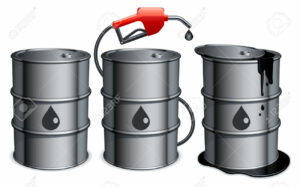Special topics
 Oil prices edged up on Wednesday as an uncontrolled wildfire near Canada’s oil sands region reduced production there, but overall markets were weighed down by slowing economic growth in Asia and the United States.
Oil prices edged up on Wednesday as an uncontrolled wildfire near Canada’s oil sands region reduced production there, but overall markets were weighed down by slowing economic growth in Asia and the United States.
The Canadian province of Alberta raced to evacuate the entire population of Fort McMurray, where a wildfire was taking hold in the heart of the country’s oil sands region, reducing output at some facilities.
Brent crude futures LCOc1 were trading at $45.07 per barrel at 0752 GMT, up 10 cents from their last settlement.
U.S. crude CLc1 was up 24 cents at $43.89 a barrel.
Wednesday’s higher prices followed two trading sessions that added up to a nearly 7 percent fall for Brent and a 5 percent drop for U.S. crude from end-April levels, pulled down by rising output from the Middle East and renewed signs of economic slowdown in Asia.
“Asia’s big markets continue to disappoint: Japan sank further, China relapsed, and India slipped,” said Frederic Neumann of HSBC in Hong Kong, adding that exports were “stuck below the waterline” and “local demand looks wobbly, too.”
In the United States, the economy is also stuttering.
“Factory orders dropped for a 16th straight month,” said the U.S.-based Schork Report. “The U.S. is set for sub-3 percent growth for a record 11th year,” it said.
Despite this, most analysts expect markets to firm towards the second half of the year.
Barclays said that “unplanned outages look unlikely to abate in the next couple of months, which have contributed to a tighter 1H16 oil market” and that “lower spare capacity, heightened disruption risk in Iraq and Venezuela, and lower supply ex-U.S. mean prices will likely average higher in Q4 than previously forecast.”
The bank said that it expected Brent to average $44 per barrel this year, an upward revision of $5 from its previous outlook, and U.S. crude to average $42 a barrel this year.
In oil production, U.S. output has fallen from a peak of over 9.6 million barrels per day (bpd) in summer last year to just over 8.9 million bpd currently, triggering one of the biggest wave of bankruptcies in American corporate history.
Despite falling output, U.S. crude inventories rose by 1.3 million barrels in the week to April 29 to 539.7 million barrels, according to data from the American Petroleum Institute, enough to meet global demand for almost a week.
Still, strong demand ahead of the summer driving season reduced stockpiles of gasoline and diesel.
In the Middle East, Iraqi exports are expected to rise in April to 3.4 million bpd, while Saudi Arabian production could return to 10.5 million bpd. Iranian exports have nearly doubled since the start of the year to almost 2 million bpd.
Source: http://classfmonline.com/1.9037445